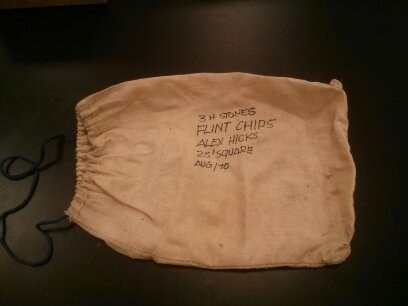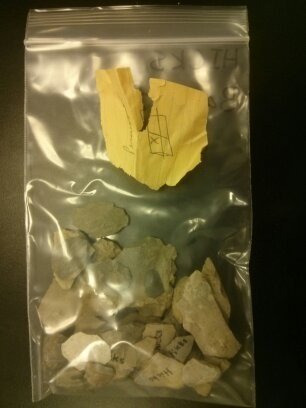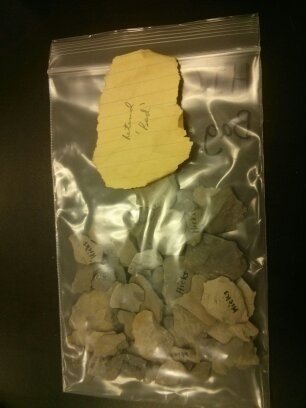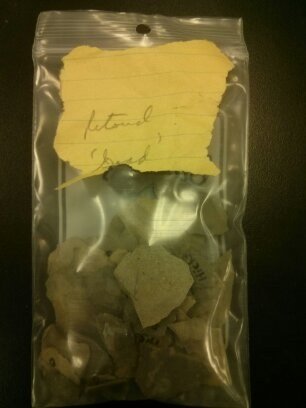Mystery Box #1: the Hicks Site
As we mentioned in our first post, the Sustainable Archaeology McMaster team spends a lot of time trying to sort out the provenience and excavation details of the collections in our care. To try and help solve these mysteries, we’ll be posting about some of the more bemusing cases from time to time, asking readers to contribute any information you might have that would give us some insight into the biographies of these collections.
Jun 08, 2015
As we mentioned in our first post, the Sustainable Archaeology McMaster team spends a lot of time trying to sort out the provenience and excavation details of the collections in our care. To try and help solve these mysteries, we’ll be posting about some of the more bemusing cases from time to time, asking readers to contribute any information you might have that would give us some insight into the biographies of these collections.
So to kick things off in our game of archaeological “Guess Who” we’ll be featuring the Hicks Site today! The artifacts we have from the Hicks Site were in a box dedicated to (and labeled as) the Brodie Site (AfHi-19). Pictured below, the Hicks Site assemblage is divided between two small brown cardboard boxes labeled only as “Hicks.” The boxes seem to be colour coded with a small round sticker on each box and the artifacts within have been divided into a number of small plastic bags and one large cloth bag reading “3H Stones; flint chips; Alex Hicks; 25′ square; August 1970.” However, this tantalizing inclusion of detail does not extend to the rest of the artifact bags, which are almost exclusively identified only by a loose categorization of the artifacts and a kind of grid system possibly indicating the location of the unit – all of which is written on small scraps of yellow lined note paper tucked into the bags.
As mystifying as this lack of documentation is, it’s always fascinating getting to know the archaeologists behind these orphaned collections. Each archaeologist has their own distinct style and habits and it’s often possible to spot little traits of their character framing and weaving through the stories told by the collections they’ve gathered. Although we may not have access to the full backstory of every artifact or site, there is almost always a deep level of care evident in the way past archaeologists and collectors have preserved the collections. Through these layers of use, care, and inquiry it is clear that the objects in our care are neither static nor dead, but rather continue to take on new meaning, gathering memories with each new encounter.

The boxes containing the Hicks Site material

A cloth bag with provenience information

The back of a cloth bag used to store lithics from the Hicks Site

A bag of lithics with the original artifact label reading “Percussion.” The label also includes what appears to be a grid or map of the excavation

A bag of lithics with the original artifact label reading “Retouch ‘Bad'”

A bag of lithics with the original artifact label reading “Retouch ‘Good'”
Article originally posted by Emily Meikle, 20150608